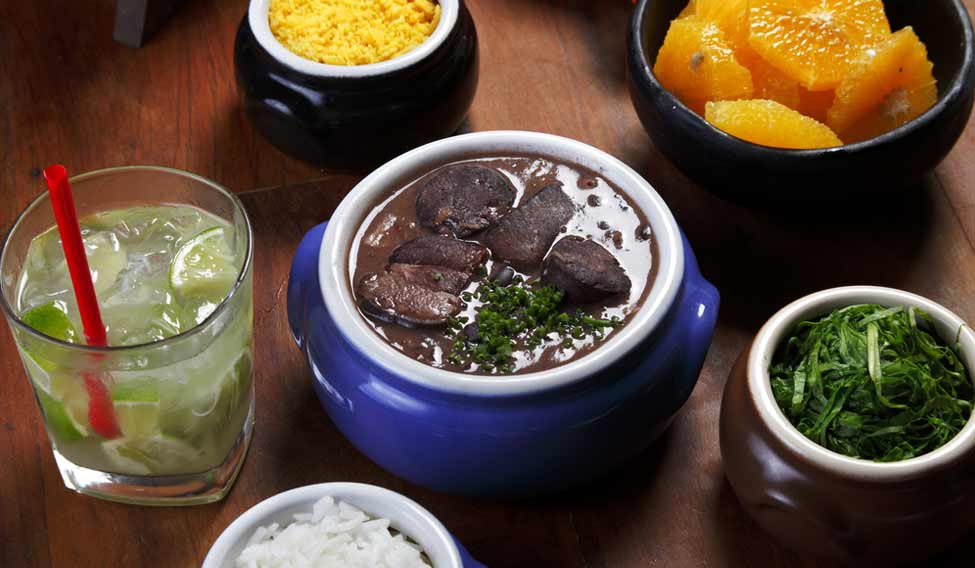The national cocktail, caipirinha
Walk into a bar or a Churrascaria (barbeque steakhouse) or even a beach-side shack and ask for a glass (or a pitcher, if you dare) of caipirinha to complement the hot grilled meat on your plate. This strong cocktail, caipirinha (Brazilian Portuguese, from caipira meaning hillbilly) is not only Brazil’s favourite drink, but is the country's national cocktail as well. You don’t need to be a connoisseur to enjoy caipirinha, but it surely helps to know that it’s not just Brazilian rum. So what is it, and how can you enjoy the perfect caipirinha? First, put on your best Portuguese accent.
Pronounced kai-pee-REEN-ya, the cocktail is made with cachaça (cah-sha-za), muddled lime and sugar, with ice. Wondering what is cachaça? It is the local Brazilian spirit that gives the drink its notorious potency. Although, both Cachaça (aguardente de cana meaning 'burning water'), and the regular rum are derived from sugarcane, they are not same, or even close to being similar. While rum is made from molasses, the by-products of sugarcane, cachaça is made from fresh-pressed sugarcane juice called garapa. Cachaça is aged in vessels of aromatic indigenous Brazilian woods; rum is often aged in oak barrels. To describe, cachaça is less refined than rum, with a very earthy quality, and not as sweet.
The local liquor, cachaça
A little bit of history on cachaça: Historian and anthropologist Luís da Câmara Cascudo, in his book Prelude of Cachaça, points out that cachaça originated around 1532, in the city of São Vicente, land of the first sugar mills in Brazil. Originally made by the thirsty slaves and workers at colonial sugarcane plantations, for vigour and energy in the midst of hard labour. 'Pinga' (a popular term for cheap cachaça meaning 'drip'), as they called their moonshine, had an enduring stigma among rich, and was often looked down on. When the affluent Brazilians later took to the poor man's cachaça, and began liking it a little too much, the drink was even banned by the Portuguese in 1744. That day, June 12, is now celebrated as International Cachaça Day!
Local law states that cachaça can be made only in Brazil using fermented fresh sugarcane juice, and will have 38 to 40 percent alcohol. Caipirinha, the Brazilian cocktail with cachaça as the base, also has its own stories as to how the drink originated. The cocktail is said to have its origin in Paraty, Rio de Janeiro, sometime in 1856, during an epidemic of cholera, when it was prohibited to drink straight (contaminated) water and people were urged to mix aguardente (cachaça) with sugar and lime. The original recipe likely had honey and garlic. The rest is boozy history.
A great caipirinha will not just be attributed to good cachaça but also the perfect lime that you use. Only go for limes that are vibrant and green, with a thin skin. Use only white cane sugar. Make sure limes are in room temperature. Substitute the lime with strawberries, passion fruit, kiwi, watermelon, or a Brazilian fruit like the siriguela to make other variations of the drink. Feeling brave? Go old fashioned and drink the cachaça straight up. Brazil's beloved spirit is also called aquela-que-matou-o-guarda, meaning 'that which killed the cop', so don't say we did't warn you.
The national dish, fejioada
Fejioada (fey-jwah-duh), a hearty, meaty bean stew, can be found on every dinning table—Brazilians love their feijão (fey-jwah, Portuguese for 'beans')—primarily served on Saturdays. It's much like the traditional British Sunday roast, eaten as a lavish luncheon. You cannot escape the call of a long siesta after a Feijoada lunch.
Feijoada originated back in the 1600's in the vast colonial sugarcane estates, by African slaves, who gathered the least-desirable parts of meat given by the plantation owners and left them in a pot with black beans, to cook while they were at work. These parts—pig's feet, tail, tongue, ears, and nose—were added into the soupy stew with onions, garlic, beans and would later be washed down with glasses of cachaça. As the dish began getting popular, more elite cuts of meat and salted pork, smoked sausage, dried beef, bacon, smoked pork ribs—all cooked separately—began to be part of the feijoada. Today, feijoada is Brazil's national dish, and comfort food. Some regions also make vegetable versions of the feijoada. The stew is garnished with pork rinds and is served at the table with white rice, orange slices, farofa (toasted manioc flour in garlic and onion), and sautéed collard greens, as a complete meal called 'feijoada completa'. A Saturday meal of Feijoada, accompanied by some cachaça certainly represents the history and heritage of Brazil, but most of all, celebrates family and community.









